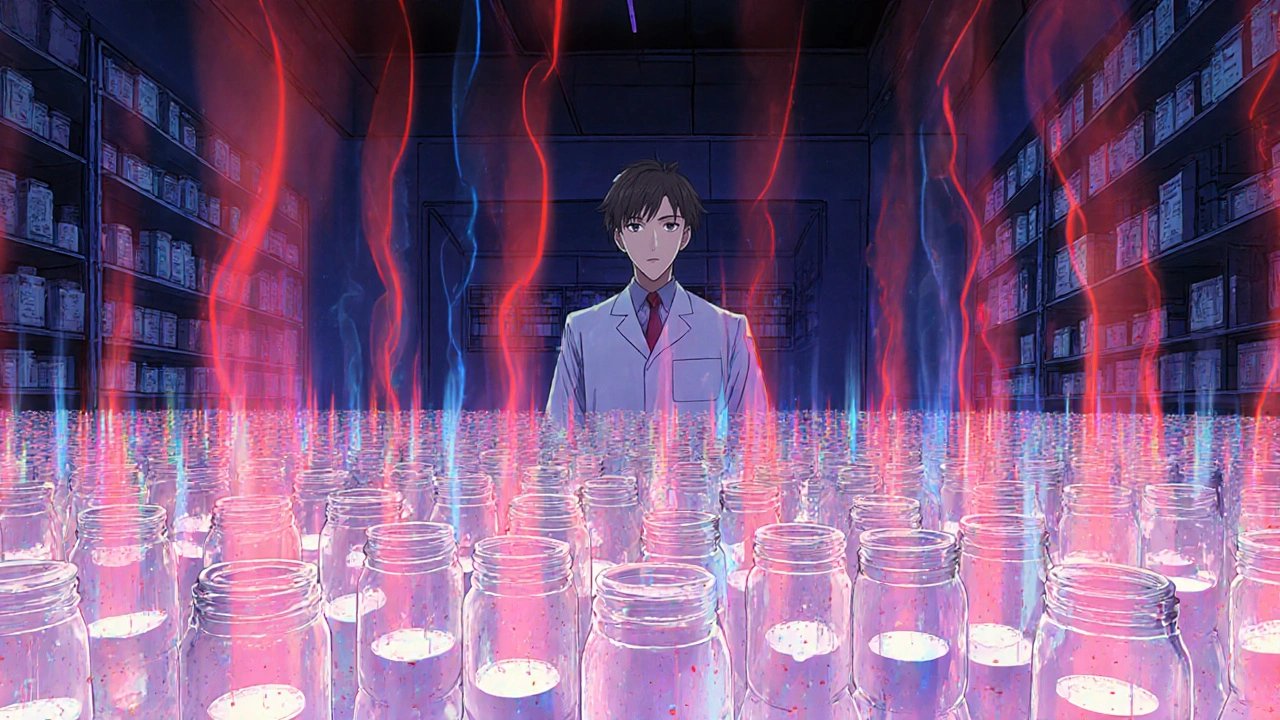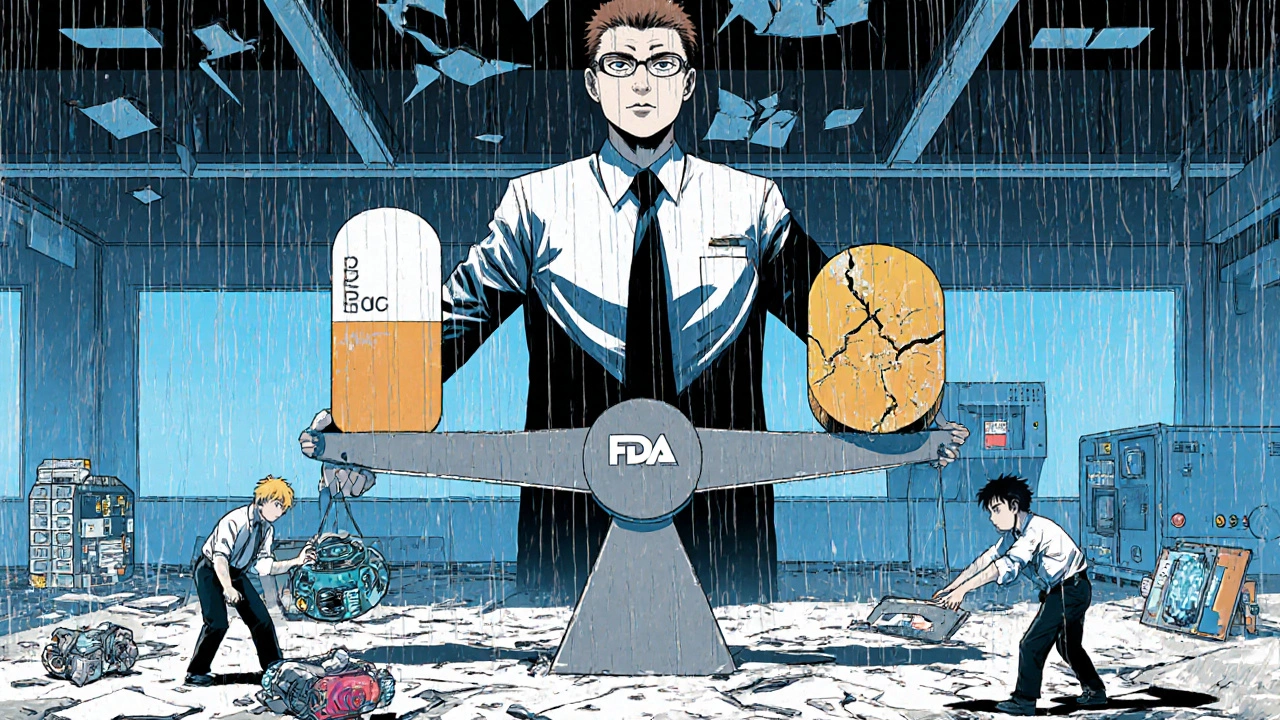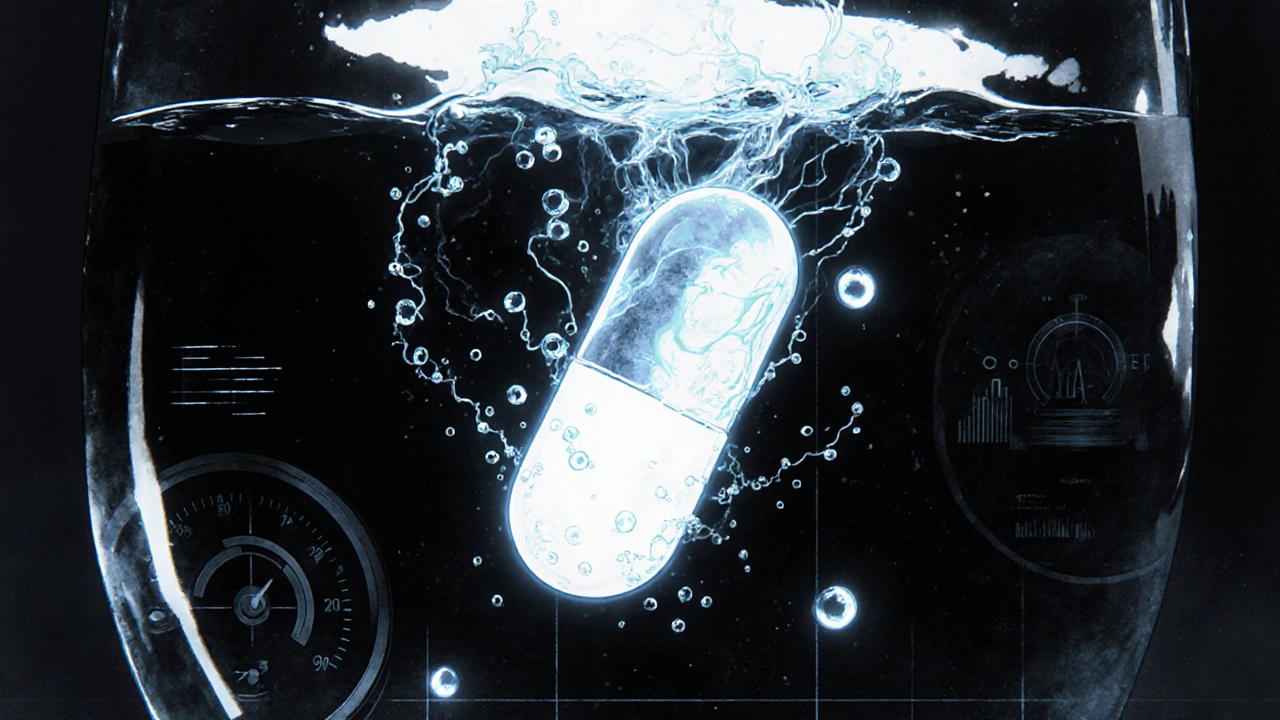When you pick up a generic pill at the pharmacy, you expect it to work just like the brand-name version. But how does the FDA make sure that generic drugs don’t lose their strength or turn harmful over time? The answer lies in stability testing-a rigorous, science-driven process that every generic drug must pass before it hits the shelf.
Why Stability Testing Matters for Generic Drugs
Generic drugs aren’t just copies. They’re required to be identical in active ingredient, dosage, strength, and performance to the original brand-name drug. But here’s the catch: even if two pills look the same, they can behave differently if their ingredients degrade at different rates. That’s why the FDA demands proof that a generic drug stays safe and effective from the day it’s made until the expiration date on the bottle.Stability testing isn’t about checking one batch. It’s about proving that every batch, under real-world conditions, will hold up. The FDA requires this because a drug that loses potency could fail to treat an infection. A drug that breaks down into toxic byproducts could cause harm. And if the packaging doesn’t protect it, moisture or light could ruin it before it even reaches you.
What the FDA Actually Requires
The FDA’s rules for stability testing are detailed in guidance documents like ICH Q1A(R2) and the 2018 ANDA Stability Q&A. Here’s what generic manufacturers must deliver:- Three primary batches of the drug product, each made at pilot scale under current Good Manufacturing Practices (cGMP).
- Testing across multiple conditions: Long-term storage at 25°C ± 2°C and 60% ± 5% relative humidity, plus accelerated conditions at 40°C ± 2°C and 75% ± 5% humidity.
- Testing frequency: Every 3 months for the first year, every 6 months for the second year, and annually after that-right up to the proposed expiration date.
- What gets tested: Physical changes (color, texture), chemical purity (active ingredient levels), microbial contamination, and functionality (like whether an inhaler still delivers the right dose).
- Container closure system: The exact bottle, cap, and blister pack you’ll get in the pharmacy must be used in testing. No shortcuts.
For a generic drug to get approved, the FDA needs at least 6 months of accelerated data and 6 months of long-term data. But here’s the catch: the clock doesn’t stop there. The manufacturer must keep running those long-term studies for the entire shelf life of the product-even after approval.
How It’s Different From Brand-Name Drugs
You might think generic drug makers get a free pass because they’re copying an existing product. They don’t. The FDA holds them to the same scientific standards. The difference is in the data they start with.Brand-name companies spend years building stability data from scratch. They test how their drug degrades under stress-heat, light, acid, you name it-to understand every possible breakdown path. Generic manufacturers don’t need to do that. They can rely on the brand-name drug’s known degradation profile. But they still have to prove their version follows the same path.
That means if the brand-name drug breaks down into a certain impurity at 40°C, the generic must show the same impurity forms at the same rate. If it doesn’t, the FDA will reject the application. This is why even small changes in excipients (inactive ingredients) or manufacturing processes can derail approval.

Why So Many Generic Applications Get Rejected
Stability testing is the #1 reason generic drug applications get a Complete Response Letter (CRL)-a fancy way of saying “we’re denying this until you fix it.” According to former FDA Deputy Director Dr. Jane Axelrad, stability issues caused 34.6% of all CRLs in 2019.What goes wrong? Here are the most common failures:
- Missing or vague protocols: 98.3% of completeness failures come from poorly written test plans. You can’t just say “we tested for stability.” You need exact methods, equipment specs, and acceptance criteria.
- Inadequate sampling: Taking too few samples or at the wrong times leads to gaps in data. One study found 22.7% of deficiencies came from flawed sampling plans.
- Unvalidated test methods: If your lab can’t prove its test actually measures what it claims to measure, the data is useless. This caused 31.2% of stability-related rejections.
- Temperature excursions: Stability chambers must stay within ±2°C. In 2022, FDA inspections found average deviations of 4.7°C-over twice the allowed limit. That’s enough to ruin months of data.
One manufacturer in India had to restart an entire stability study after a power outage caused their chamber to hit 48°C for 14 hours. The FDA didn’t accept the data. The company lost six months and over $200,000.
How Companies Are Getting Better
The stakes are high, so top generic manufacturers are investing in smarter systems:- Automated monitoring: 78.4% of the top 25 generic makers now use real-time sensors to track temperature and humidity in stability chambers, with alerts if something goes off.
- Pre-submission meetings: Talking to the FDA before submitting an ANDA cuts deficiency rates by 42.6%. Many companies now schedule these early to avoid costly surprises.
- Bracketing and matrixing: Instead of testing every strength and size, companies can test only the extremes (e.g., highest and lowest doses) if they can prove the middle ones behave the same. This saves time and money-and the FDA approved it in 67.3% of requests in 2022.
Even packaging is getting smarter. Some companies now use desiccants inside blister packs that change color if moisture levels rise-giving pharmacists a visual cue that the product might be compromised.
What’s Changing in 2025 and Beyond
The FDA isn’t standing still. In June 2025, it released a draft guidance proposing major updates:- 24-month stability data required for all new ANDAs-up from 12 months. This means longer wait times before approval, but more confidence in shelf life.
- Quality by Design (QbD) principles will be mandatory. That means stability testing must be built into the product design from day one, not added as an afterthought.
- Photostability testing will be required for more products, especially those in clear bottles or light-sensitive formulations.
- Nanomaterials and continuous manufacturing are new frontiers. Drugs made with nanotech or continuous production lines need special stability protocols because their behavior can’t be predicted from traditional methods.
Blockchain for stability data verification is also in pilot testing. Imagine a tamper-proof digital ledger that tracks every temperature reading, every test result, and every batch-visible to regulators in real time. It’s not science fiction anymore.

The Cost and the Competition
Stability testing isn’t cheap. It accounts for about 18.7% of total ANDA development costs-roughly $487,500 per application. For small manufacturers, that’s a huge barrier.Indian companies, which made up 40.3% of U.S. generic approvals in 2022, accounted for 62.8% of all stability-related rejections. Why? Often, it’s not because they cut corners-it’s because they’re under pressure to keep prices low. That leaves less room for investment in advanced monitoring or trained staff.
Meanwhile, the U.S. generic market is worth $127.4 billion. But generics make up only 23.4% of total drug spending. That means manufacturers are squeezed between low prices and rising compliance costs. The result? A race to the bottom on quality, unless regulators step in.
What This Means for You
As a patient, you don’t need to know the details of stability chambers or ICH guidelines. But you should know this: the FDA doesn’t approve a generic drug unless it’s proven to be just as stable and safe as the brand-name version. That’s not a promise-it’s a scientific requirement backed by months of data.When you see “generic” on your prescription, you’re not getting a second-rate product. You’re getting a product that had to clear the same high bar as the original-just with less upfront research and more focus on consistency.
And if your generic drug looks different this time? Or if the bottle feels different? That’s not a red flag. It’s probably a new manufacturer. But the FDA still made sure it met every stability requirement before letting it sell.
Do generic drugs have the same shelf life as brand-name drugs?
Yes-when approved, generics must have the same expiration date as the brand-name drug they copy. The FDA requires proof that both drugs degrade at the same rate under the same conditions. If the brand lasts 3 years, the generic must also prove it lasts 3 years. Sometimes generics get shorter dates if their data doesn’t support the full term, but that’s rare and always based on evidence.
Can I trust a generic drug that’s been on the market for years?
Absolutely. Once approved, manufacturers must continue stability testing throughout the product’s entire shelf life. Even if a generic has been sold for 10 years, the company is still required to monitor its performance. If a new stability issue emerges-like increased impurity levels-the FDA can pull it from the market. That’s why older generics aren’t automatically safe; they’re continuously monitored.
What happens if a generic drug fails stability testing after approval?
The FDA can issue a recall, require a label change, or suspend manufacturing. In 2023, a popular generic antibiotic was pulled after stability tests showed it lost potency faster than expected in humid conditions. The manufacturer had to repackage all existing stock and submit new data before it could return to shelves. This isn’t common, but it happens-and it’s exactly how the system is supposed to work.
Are there any shortcuts for well-established generic drugs?
Not officially. Even for drugs that have been made for decades, the FDA still requires full stability data for each new manufacturer. However, some proposals-like the 2024 Enhancing Generic Drug Access Act-suggest reducing testing for products with decades of proven safety. No changes have been made yet, but this could be the next big shift in the regulatory landscape.
How does the FDA verify that stability data is real?
Through unannounced inspections. FDA inspectors show up at manufacturing and testing labs without warning, check calibration records for equipment, review raw data files, and even retest samples in their own labs. In 2022, they found 63.2% of generic manufacturers had issues with stability chamber logs-meaning someone had either faked the data or failed to record it properly. That’s why the FDA doesn’t just trust the paperwork.
What’s Next for Generic Drug Stability?
The future of generic drugs isn’t just about cheaper prices-it’s about smarter, more reliable testing. With blockchain, automated monitoring, and AI-driven data analysis on the horizon, the process will become more transparent and less prone to human error. Manufacturers will still face pressure to cut costs, but the FDA’s standards aren’t going away. In fact, they’re getting tighter.For patients, that means more confidence in every generic pill you take. For manufacturers, it means higher barriers to entry-but also a level playing field where quality, not just price, wins.


King Over
November 19, 2025 AT 14:53Stability testing is wild when you think about it
Someone spends years making sure a pill doesn’t turn into poison
And we just swallow it without a second thought
Katie Magnus
November 20, 2025 AT 09:45OMG I just realized my generic blood pressure pill might be slowly turning into chemical soup
LIKE WHAT IF IT’S JUST A LITTLE BIT LESS EFFECTIVE
AND I’M JUST… SURVIVING ON A DREAM
THIS IS HORRIFYING
WHY DOESN’T THE FDA JUST GIVE US BRAND NAMES FOR FREE
WHY DO WE HAVE TO BE LAB RATS
MY PHARMACY GAVE ME A DIFFERENT BLUE PILL THIS MONTH
I THINK THEY’RE SWITCHING OUT THE ACTIVE INGREDIENT
OR MAYBE IT’S A GOVERNMENT CONSPIRACY
WHY DOESN’T ANYONE TALK ABOUT THIS
WE’RE ALL ONE BAD BATCH AWAY FROM A MEDICAL NIGHTMARE
MY DOCTOR DOESN’T EVEN KNOW HOW THIS WORKS
WHY AM I THE ONLY ONE PANICKING
Johannah Lavin
November 20, 2025 AT 22:35Okay but can we just take a second to appreciate how insane it is that someone’s job is to make sure your pill doesn’t turn into a science experiment? 🙌
Like imagine being the person who checks if the humidity in a room made your medicine lose its power
That’s real life superhero stuff
And the fact that they’re still testing it years after approval? That’s love 💛
So next time you pick up a generic, give a little thanks to the quiet lab nerds keeping you alive
Also - that color-changing desiccant in blister packs?? SO COOL 😍
Ravinder Singh
November 21, 2025 AT 17:40As someone from India working in pharma, I see this every day
Yes, some companies cut corners because prices are low
But most of us are fighting hard to meet FDA standards
It’s not about laziness - it’s about resources
We have brilliant scientists, but no budget for real-time sensors
When a power outage ruins six months of data? That’s not negligence
That’s systemic pressure
The FDA needs to understand this
Not all rejections are failures - some are just cost-of-doing-business
We want to do right
But we need support, not just audits
Let’s fix the system, not just blame the makers
And yes - we’re adopting automation. Slowly. But we’re trying
Russ Bergeman
November 23, 2025 AT 12:31Wait.
So… you’re telling me… that if the humidity is off by 0.3%…
the whole batch…
is…
invalid?
That’s…
ridiculous.
Who cares if it’s 60.2%?
It’s a pill.
It’s not a rocket.
And why do they need 24 months of data?
That’s just bureaucratic overkill.
It’s not like people keep pills for 5 years.
And why are they even testing blister packs?
Just use better packaging.
Why is this so complicated?
It’s a pill.
It’s not magic.
Dana Oralkhan
November 24, 2025 AT 00:52I really appreciate how much care goes into this
It’s easy to take for granted
But every time I get a generic, I think about the people who made sure it wouldn’t hurt me
It’s not just chemistry
It’s trust
And that trust is built on thousands of hours of testing
Even if the pill looks different
Even if the bottle feels cheaper
It’s still held to the same standard
That’s worth remembering
Thanks for sharing this
It made me feel safer
Jeremy Samuel
November 25, 2025 AT 15:49Stability testing my ass
They just wanna keep us paying for brand names
Who even checks if these labs are lying
Probably the same people who think ‘ICH Q1A(R2)’ is a breakfast cereal
And 24 months? LOL
I’ve had generics that sat in my bathroom for 4 years
Still worked fine
Just sayin’
Also the FDA is just scared of innovation
They like paperwork more than progress
Destiny Annamaria
November 26, 2025 AT 04:13Okay but let’s talk about how this is actually a global story
India makes 40% of our generics
But they’re getting slammed for failures
Meanwhile, U.S. companies charge $10K for a pill that costs $0.10 to make
It’s not about safety - it’s about who gets to profit
And why do we celebrate ‘American-made’ when the science is global?
Can we stop acting like quality = country?
My cousin in Chennai runs a lab that’s cleaner than some U.S. facilities
It’s not about where it’s made
It’s about who’s watching
And right now? The watch is broken
Ron and Gill Day
November 26, 2025 AT 12:57This article is a joke.
It’s corporate propaganda dressed as science.
Generic drugs are inferior.
They’re made by underpaid workers in crumbling labs.
They’re approved because the FDA is underfunded and overworked.
And you think a color-changing desiccant makes it safe?
It’s a sticker.
It’s not a guarantee.
People die from bad generics.
It’s not rare.
It’s systemic.
And you’re just… okay with it?
Pathetic.
Alyssa Torres
November 26, 2025 AT 13:04Y’all are missing the real win here
Generic drugs saved my life - and my wallet
I have lupus
Brand-name meds cost $2,000/month
Generic? $40
And I’ve been on it for 7 years
My labs are stable
My symptoms are controlled
The FDA didn’t just approve it
They made sure it would keep working
Every single month
For 7 years
That’s not luck
That’s science
That’s care
So yeah
I’ll take the blue pill
And I’ll thank the people who made sure it didn’t turn to dust
And yes
I know it’s not magic
But sometimes
Good science is the quietest kind of heroism